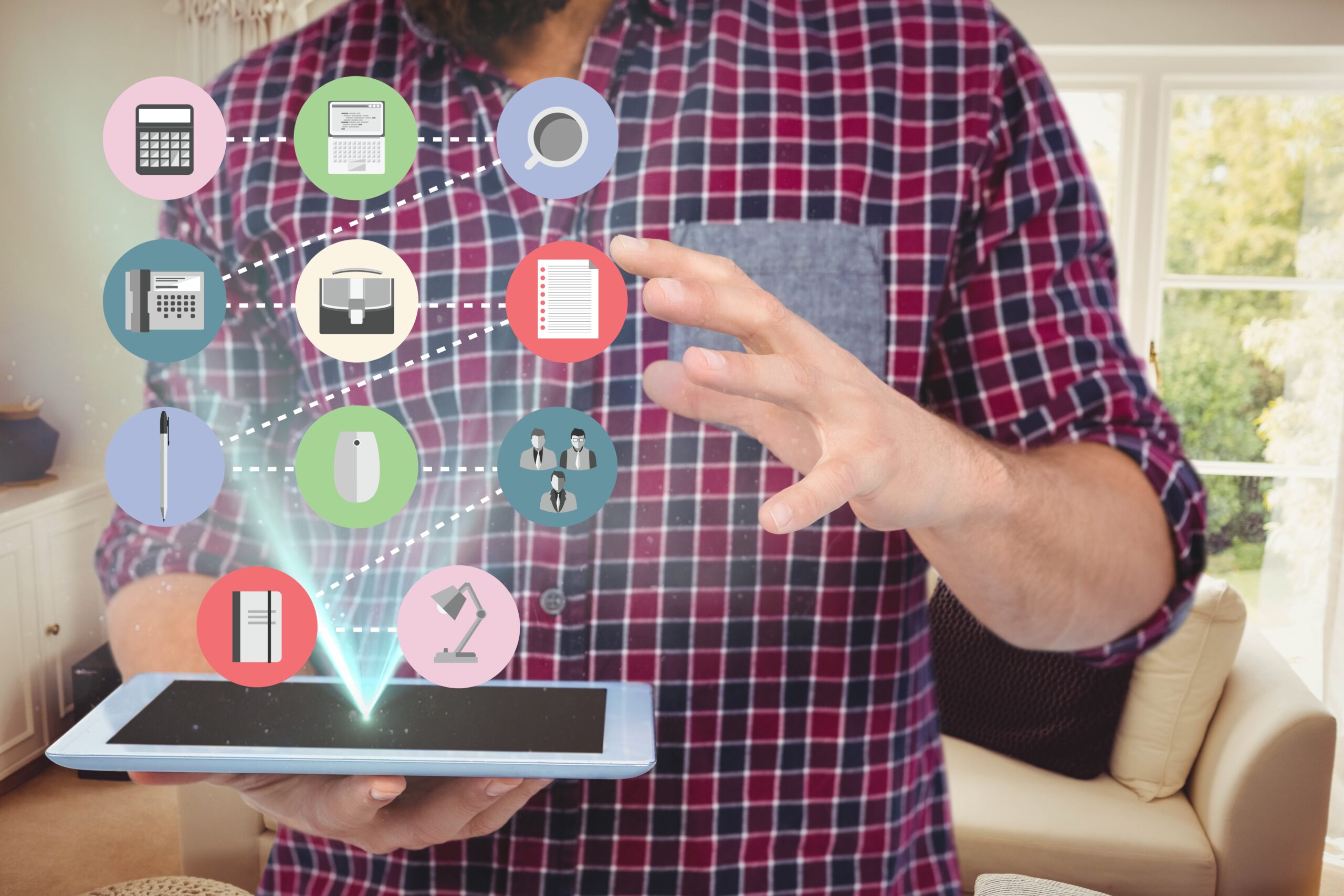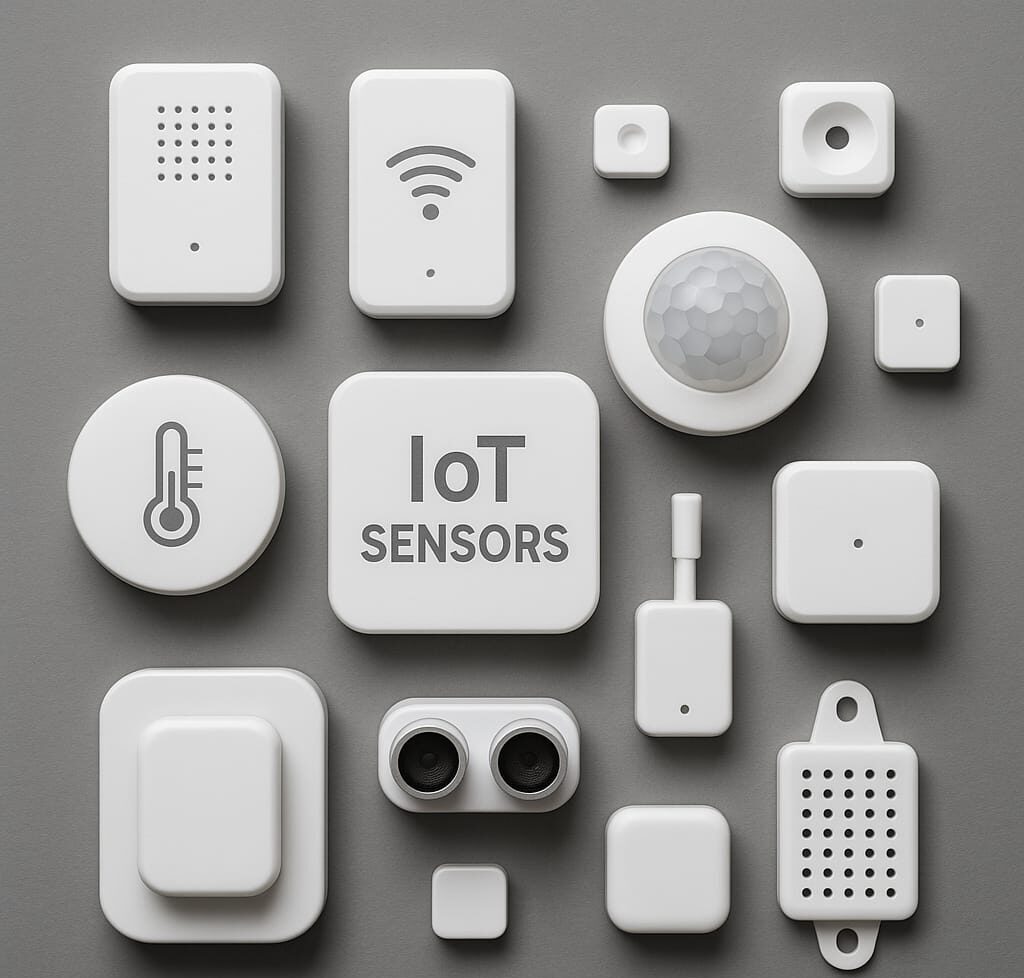From Sensor to Screen: How IoT Sensors Send Data to Your Website

The modern digital world thrives on data, and IoT sensors play a vital role in collecting it. Whether it’s a smart thermostat, a security camera, or an industrial monitoring system, IoT sensors are quietly working behind the scenes—gathering data and transmitting it to websites, dashboards, and apps in real time. But how exactly does this invisible flow of data work
In this blog, we’ll break down how IoT sensors send data to your website, the technology behind it, and the critical components involved in the process. Let’s trace the path from sensor to screen.This blog is a part of our Service Web designing.
Table of Contents
What Are IoT Sensors

IoT sensors are hardware devices embedded in systems, equipment, or environments to collect specific data—like temperature, humidity, motion, pressure, light, or location. These sensors are a fundamental part of the Internet of Things (IoT) ecosystem, where physical objects are connected to the internet to communicate and exchange data.
Common types of IoT sensors include:
- Temperature Sensors – used in weather stations and HVAC systems
- Motion Sensors – used in smart security and lighting systems
- Proximity Sensors – used in vehicles and mobile devices
- Pressure Sensors – used in pipelines and industrial equipment
- Gas and Smoke Sensors – used in safety systems
The ability of these sensors to connect to the internet and transmit data makes them “smart” and enables businesses and developers to display real-time data on a website or web dashboard.
How Do IoT Sensors Send Data
The journey from sensor to screen involves several key steps. Let’s explore how IoT sensors send data to your website:
Step 1: Data Collection by the IoT Sensor
Each IoT sensor is programmed to detect a particular type of data. For instance, a temperature sensor may take readings every few seconds. These data points are captured by the sensor’s onboard microcontroller.
Step 2: Data Transmission Protocols
Once collected, the data needs to be transmitted. IoT sensors use various communication protocols depending on the application:
- Wi-Fi: Common for home and commercial IoT setups.
- Bluetooth/BLE: Used in wearable and portable devices.
- LoRaWAN: Ideal for long-range and low-power industrial setups.
- Zigbee: Suitable for smart home networks.
- Cellular (4G/5G): Used in remote or mobile applications.
These protocols send the data to a local gateway or directly to the cloud, depending on the architecture.
Step 3: Data Processing at the IoT Gateway
An IoT gateway acts as a bridge between the sensor and the internet. It aggregates data from multiple sensors, applies basic filtering or processing, and forwards the data to cloud servers or APIs.
In some cases, data may be pre-processed at the edge (edge computing), which reduces latency and bandwidth usage.
Step 4: Data Transmission to Cloud or Server
The gateway sends data to a cloud server (such as AWS IoT, Azure IoT Hub, or Google Cloud IoT) or a self-hosted web server using protocols like:
These lightweight protocols are designed for fast, efficient, and reliable data transfer from IoT devices to web applications.
Step 5: Backend Processing and Storage
Once the data reaches your cloud or server, it is:
- Logged into a database (like MySQL, PostgreSQL, MongoDB)
- Processed by a backend service (e.g., Node.js, Python Flask, PHP)
- Validated and formatted into meaningful units
This is the point where data becomes usable. You can run analytics, set triggers, or convert raw values into user-friendly insights.
Step 6: Data Display on the Website
Finally, the data is pulled from the server or cloud using web APIs or AJAX calls. It is then rendered on a web dashboard using visualization tools like:
- Charts.js
- Google Charts
- D3.js
- Power BI Embedded
Users see live or near-real-time data updates directly on their browser screens. For example:
- A smart farm dashboard may show soil moisture levels.
- A logistics dashboard may show vehicle GPS positions.
- A home automation dashboard may display indoor temperature trends.
Why IoT Sensors Matter for Websites and Dashboards
In today’s data-driven world, the ability to collect, analyze, and display real-time information is critical for smarter decisions—and IoT sensors make that possible. When integrated with websites and dashboards, these sensors provide continuous, real-time data feeds that help users monitor and manage systems remotely with ease.
Here’s why IoT sensors are essential in this context:
Real-Time Monitoring and Decision-Making
IoT sensors provide continuous updates, enabling businesses and users to view live data directly on websites or dashboards. For example, a logistics company can track fleet location and fuel usage, or a hospital can monitor patient vitals—all in real-time. This immediacy allows for quicker decisions, faster responses to issues, and better resource planning.
Improved User Experience
Websites integrated with IoT data offer interactive experiences. Instead of static content, users engage with dynamic charts, alerts, and real-time visuals. Whether it’s a smart home app displaying room temperatures or a weather dashboard showing current air quality, the data-rich interface enhances user satisfaction and engagement.
Operational Efficiency
When IoT sensors feed data directly into a website, it eliminates the need for manual data entry or delayed reports. This automation increases operational speed and accuracy. For instance, in a factory setting, IoT sensors can detect machine failures and alert maintenance teams instantly via a dashboard—reducing downtime.
Predictive Insights
Web dashboards don’t just display data—they analyze it. When combined with historical sensor data, websites can predict trends, such as when a device is likely to fail or when energy consumption is peaking. This predictive ability reduces costs and increases reliability.
Remote Accessibility
A key advantage of web integration is that users can access IoT data from anywhere, at any time. Whether on a laptop or smartphone, users can log in and view live sensor data—ideal for remote teams, field engineers, or business managers on the move.
Cross-Industry Applications
From smart cities and agriculture to healthcare, retail, and manufacturing—IoT sensor-powered websites are revolutionizing industries:
- Agriculture: Soil sensors send data to crop management dashboards.
- Healthcare: Wearable sensors display vitals on patient portals.
- Smart Homes: Home sensors are integrated with mobile-friendly web apps.
- Retail: Inventory sensors update online stock dashboards in real-time.
Increased Transparency and Accountability
When sensor data is made visible on public or internal dashboards, it fosters transparency. For example, an energy company can display real-time consumption data on its customer portal, building trust and encouraging better usage practices.
Data-Driven Automation
Web-connected IoT sensors enable rule-based automation. For instance, when a temperature sensor detects overheating, the system can automatically send alerts or trigger cooling mechanisms. All actions are visible and controllable via the web interface.
Common Challenges in Sending IoT Sensor Data
Despite its potential, the process of sending data from IoT sensors to a website can face obstacles:
- Connectivity issues (especially in rural/remote areas)
- Security risks (data breaches, unencrypted transmission)
- Data overload (massive volume of sensor data)
- Latency and sync problems (delayed updates)
To address these, developers must implement strong encryption (like TLS), data compression, and intelligent data filtering techniques.
Best Practices for IoT Website Integration
To ensure seamless display of sensor data on your website:
- Choose scalable cloud platforms to handle large data.
- Use RESTful APIs or MQTT brokers for efficient transmission.
- Optimize frontend charts and visualizations for speed.
- Implement fallback mechanisms in case of network failure.
- Test sensor accuracy regularly to ensure data reliability.
The magic of seeing real-time temperature readings or movement alerts on your website comes down to the incredible journey of data through IoT sensors. From capturing raw environmental information to transmitting, processing, and visually displaying it, the path from sensor to screen is a sophisticated but achievable process.
As IoT adoption grows, so does the demand for smarter, faster, and more secure ways to deliver sensor data to web platforms. If you’re planning to build a smart system or dashboard, understanding how IoT sensors send data is the first crucial step.
